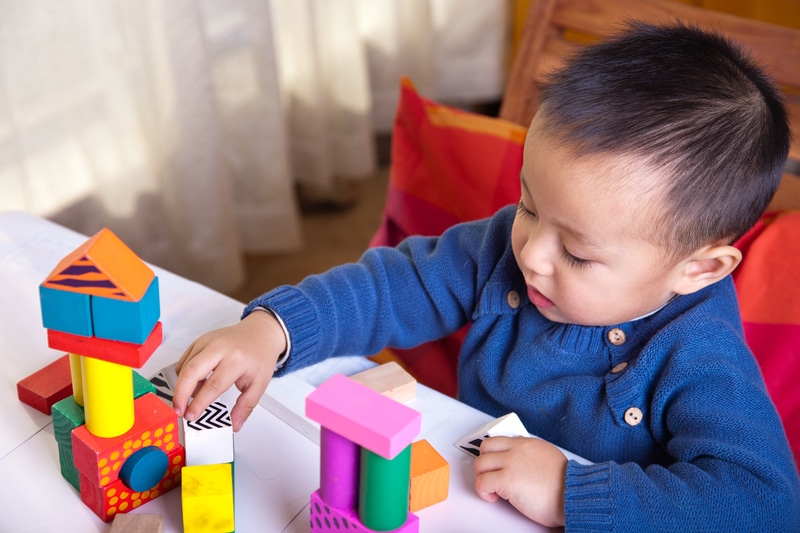
3 Questions To Ask When Shopping For Toxic Chemical Free Toys
1. What is it made of?
Wood toys are not only beautiful to look at, but they can be safer than their plastic counterparts. Plastic toys often contain hazardous compounds, the biggest offenders being bisphenol A (BPA), phthlates and lead. One of the biggest reasons to avoid these toxic chemicals in toys is because kids can absorb them by chewing or sucking on materials that contain them and, as we all know, little kids love to put toys in their mouths. This article from Parent Map does a great job of breaking down the concerns with each of them. And check out the age rating on the box, as it refers to the safe age for children to play with the toy (which may have small, easily swallowed parts), not to their intellectual readiness.
2. What is treated with?
So avoid plastic and you’re good, right? Kind of. Yes, not purchasing plastic toys goes a long way towards reducing the toxicity in your toy box. But (you knew there was one!) even wooden toys are not totally immune to toxic ingredients as they can be made of wood containing formaldehyde or painted with paint that contains lead and VOCs. Overwhelmed? Don’t be. Natural Baby Mama created this amazing roundup of toy manufacturers she loves and includes incredibly helpful information and advice on how to select chemical free toys that meet her high safety standards. You may want to leave your wallet in another room, because her chemical free toy picks are so cute you will want to pick up one of each.
3. Where does it come from?
Standards for product ingredient safety vary from country to country. Toys made in China, where over 80% of the world’s toys are manufactured, have been found to contain high levels of phthalates and lead. A recent study by the Consumer Council reported phthalates in China-made toys at concentrations up to 300 times the United States and European Union standards in over half the toys it tested. Finding out where your toys are manufactured and if at all possible, avoiding those made in China are great ways to lower your children’s risk of toxic exposure through toys. Do a little research before shopping as some manufacturers use tricky industry terms like “assembled in Germany” when in fact they were originally manufactured in China, or contain parts made in China.
The good news is, it’s getting easier to find chemical free toys. From great bloggers, like those linked above, to exhaustive lists of toys not produced in China, the information and resources are there to help parents make safer toy purchases. Each year the U.S. Public Interest Group publishes a report on safety and recalls in the toy category that is a great resource before holiday shopping. Finding credible sources, knowing what your personal threshold is for what you’re willing to accept, and supporting brands you believe in are great ways to maintain a chemical free toy box in your home.
At Force of Nature, we’re committed to making this world safer for everyone. It’s why we created a chemical free cleaning system that’s as effective as bleach and gentle enough to spray on your (phthalate, lead and BPA free!) wooden toys. If you’d like to learn more about us, hop on over here.



